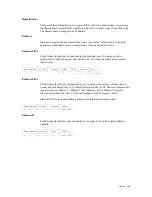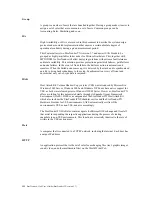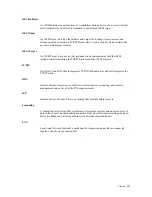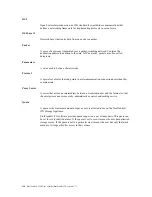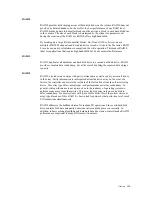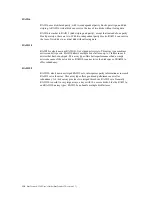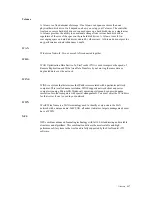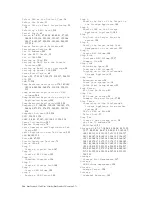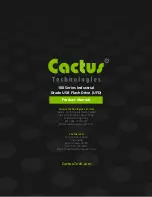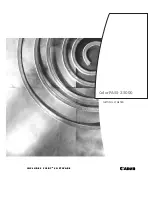
StorTrends® 1300 User’s Guide (StorTrends iTX version 2.7)
332
ROW
Reallocate On Write or Redirect On Write. Redirect-on-Write (ROW) snapshots use a
method of protecting data that needs to be overwritten by new writes after a snapshot has
been taken. ROW snapshots preserve the old data in its old location, and instead, redirect
the new write to a new location.
The physical address of the data is changed for the current data. All subsequent reads and
writes of data for the volume are performed at the new location. Snapshot reads continue
to be performed from the old location.
As with Copy-on-Write snapshots, systems that implement Redirect-On-Write snapshots
also need to maintain tables that contain a map of where old data and new data are stored.
However, this mapping needs to be updated and referred to for volume reads in Redirect-
on-Write, as opposed to merely for snapshot reads in Copy-on-Write. As mentioned
earlier, it is therefore very important to maintain these tables in main memory for
Redirect-on-Write snapshot systems. And in order to keep the amount of memory
manageably small, the chunk size for these systems is usually more than one sector, for
example 64kB.
Because write requests arriving to the disk may be smaller than the chunk size, and since
a chunk’s worth of data always must be valid when it is written to the new location,
Redirect-on-Write snapshots sometimes require a read-modify-write cycle to keep data
valid at the chunk granularity. If the chunk size is 64kB, and a new 8kB write arrives,
64kB of old data is read, the 8kB change is applied, and the updated 64kB is written to
the new location. Therefore, the first write after a redirect-on-write snapshot may
sometimes spawn an additional read.
SAFE
Snapshot Agent Framework Environment. SAFE is a component of the StorTrends iTX
Host Attach Kit, which also includes the StorTrends iTX Scheduler service and the
StorTrends iTX Hardware Provider for VSS environments. SAFE automatically verifies
if the environment is VSS or non-VSS, and acts accordingly.
SAN
Storage Area Network. It is a network of shared storage devices. Its architecture works in
a way that makes all storage devices available to all servers on a LAN or WAN. As more
storage devices are added to a SAN, they too will be accessible from any server in the
larger network. In this case, the server merely acts as a pathway between the end user and
the stored data.
Summary of Contents for ManageTrends 2.7
Page 18: ...StorTrends 1300 User s Guide StorTrends iTX version 2 7 xviii...
Page 24: ...StorTrends 1300 User s Guide StorTrends iTX version 2 7 6...
Page 33: ...Chapter Two Chassis Set Up 15 Accessing the Inside of the System...
Page 60: ...StorTrends 1300 User s Guide StorTrends iTX version 2 7 42...
Page 64: ...StorTrends 1300 User s Guide StorTrends iTX version 2 7 46...
Page 70: ...StorTrends 1300 User s Guide StorTrends iTX version 2 7 52...
Page 100: ...StorTrends 1300 User s Guide StorTrends iTX version 2 7 82...
Page 106: ...StorTrends 1300 User s Guide StorTrends iTX version 2 7 88 Control Panel...
Page 236: ...StorTrends 1300 User s Guide StorTrends iTX version 2 7 218...
Page 256: ...StorTrends 1300 User s Guide StorTrends iTX version 2 7 238...
Page 277: ...Appendix E Replication Overview 259 Snap Assisted Replication Navigating with ManageTrends...
Page 281: ...Appendix E Replication Overview 263 Replication SAR view Primary Box SAR view Secondary Box...
Page 285: ...Appendix E Replication Overview 267 After Failover Operation in Secondary Box...
Page 300: ...StorTrends 1300 User s Guide StorTrends iTX version 2 7 282...
Page 308: ...StorTrends 1300 User s Guide StorTrends iTX version 2 7 290...
Page 330: ...StorTrends 1300 User s Guide StorTrends iTX version 2 7 312...
Page 356: ...StorTrends 1300 User s Guide StorTrends iTX version 2 7 338...


